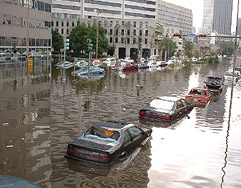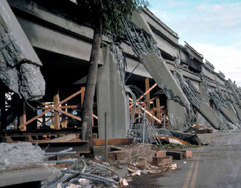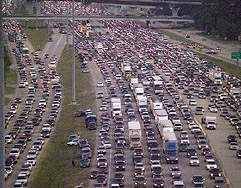Filmed near the location of the Devils Hole Massacre, September 14, 1763.
The Robert Moses Niagara Hydroelectric Power Station is a hydroelectric power station in Lewiston, New York near Niagara Falls, New York, United States. The plant diverts water from Niagara River above Niagara Falls and returns the water into the lower portion of the river near Lake Ontario. It utilizes 13 generators at an installed capacity of 2,515 megawatts (MW).
The Robert Moses plant was built to replace power production upon the collapse of the hydroelectric Schoellkopf Power Station on June 7, 1956 in Niagara Falls. It is named after Robert Moses, a mid-20th Century urban planner in New York and is directly opposite of the Sir Adam Beck Hydroelectric Power Stations in Ontario, Canada.
OriginsThe land that the Robert Moses Niagara Power Plant sits on has a long history of use for hydroelectricity. In 1805, Augustus and Peter Porter of Buffalo, New York purchased the American Falls from New York in a public auction. Acquiring the rights to the eastern rapids above the falls as well, the Porter brothers envisioned building a diversion canal in order to produce hydro-electricity. Before constructing the canal or powerhouse, the Porter brothers both died and several companies unsuccessfully attempted the project afterwards.
In 1853, the Niagara Falls Hydraulic Power & Manufacturing Company was first chartered and began construction on the canal in 1860. The 35 ft (11 m) wide and 8 ft (2.4 m) deep canal was completed in 1861 and in 1875, the powerhouse began to operate. The power plant produced very little electricity although in the early electric age.
In 1877, Jacob Schoellkopf purchased the canal along with the water and power rights for $71,000. Schoellkopf would improve the canal and use the powerhouse for commercial uses.
In 1881 the Schoelkopf Power Station No. 1 was constructed, which would operate until 1904. In 1898, Schoellkopf completed their second power plant, the Schoellkopf Power Station No. 2, directly in front of the original, in the gorge below the falls, with a higher 210 ft (64 m). drop. In 1904, they built Schoellkopf Stations No. 3A and 3B.
In 1886, the competing Niagara Falls Power Company, owned by the Cataract Construction Company, built what is known as the Adams Power Plant. In 1900, construction began on the Niagara Falls Power Company’s Powerhouse No. 2, which was completed in 1904 a total of 11 generators.
In 1918, the First World War prompted consolidation of the two existing power companies to form a new Niagara Falls Power Company. In 1921, construction began on Schoellkopf Station No. 3C, adjacent to the previous ones. This was completed in 1924 and contained three 25 Hz generators with a total capacity of 210,000 hp (160,000 kW).[2] In 1925, the entire set of Schoellkopf Power Stations had 19 generators which could produce 450,000 HP (335 MW).
On June 7, 1956 water had seeped into the back wall of the Schoellkopf power station No. 2 and despite worker efforts to stop the flow of water, 2/3 of the power station collapsed. The power station had already long out-lived its life-expectancy though. However, one worker was killed and damage was estimated at $100 million USD.
In order to replace the Schoellkopf Power Stations, the New York Power Authority (NYPA) planned a new power-plant at a cost of $800 million USD that would take three years to build and produce 2.4 GW. At the time, it was called the Niagara Power Project before it was named the Robert Moses Niagara Power Station, after Robert Moses, the NYPA head at the time.
In 1957, the United States Congress approved the project and construction began that year. The NYPA had to gain the right to 550 acres (2.2 km2) of Tuscarora Indian Reservation in order to build the 1,900-acre (7.7 km2), 22-billion-US-gallon (83,000,000 m3) reservoir and did so in 1960 through a United States Supreme Court decision, the Federal Power Commission v. Tuscarora Indian Nation.
During construction, over 12 million cubic yards of rock was excavated and twenty workers had died. Construction was complete in 1961. In 1961, when the Niagara Falls hydroelectric project first went on line, it was the largest hydropower facility in the Western world. – gforce118118 on YouTube
Tags: gforce118118, Lewiston, New York, Niagra Falls, Niagra Gorge, Robert Moses Niagra Hydroelectric Station, YouTube






 RSS Feed
RSS Feed